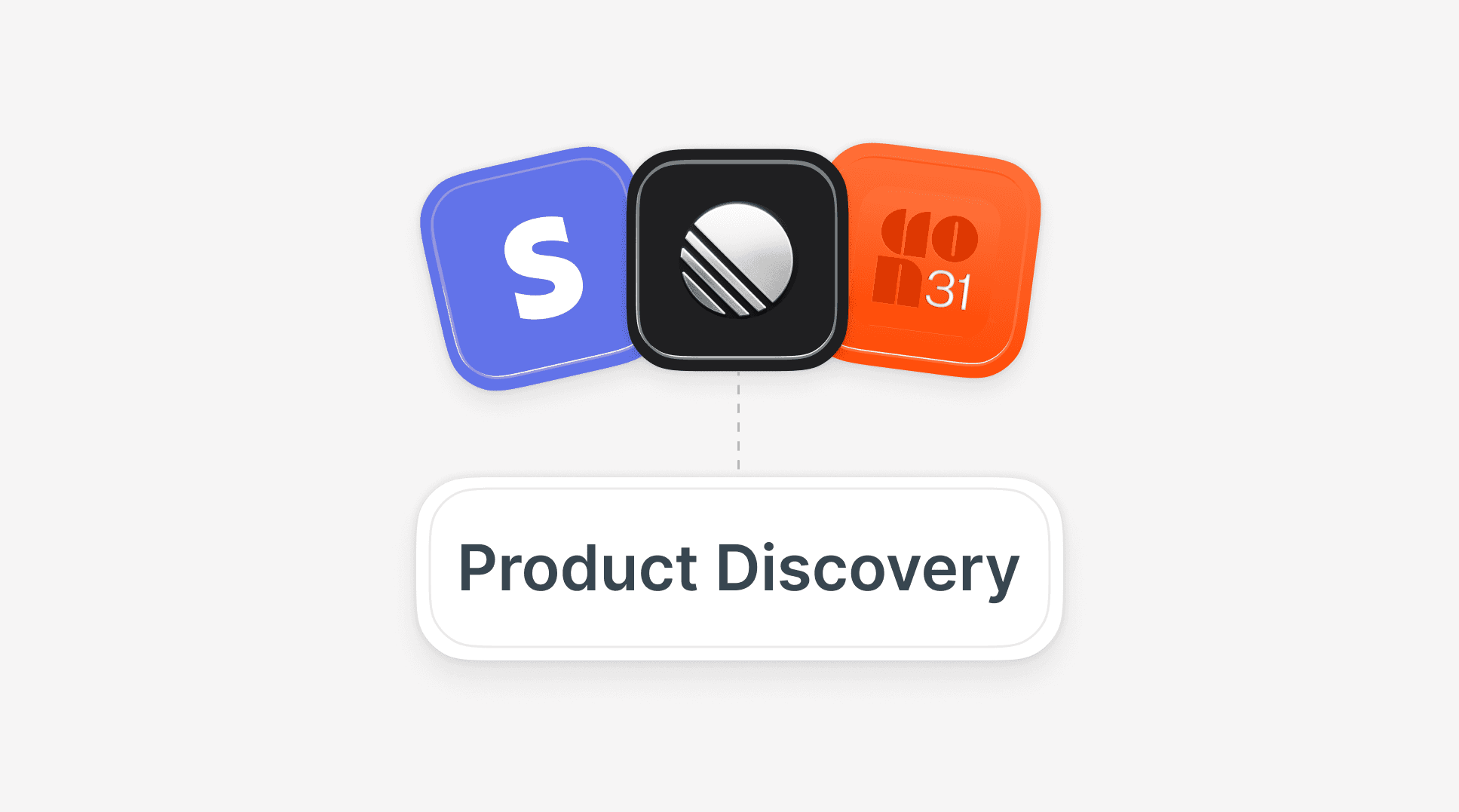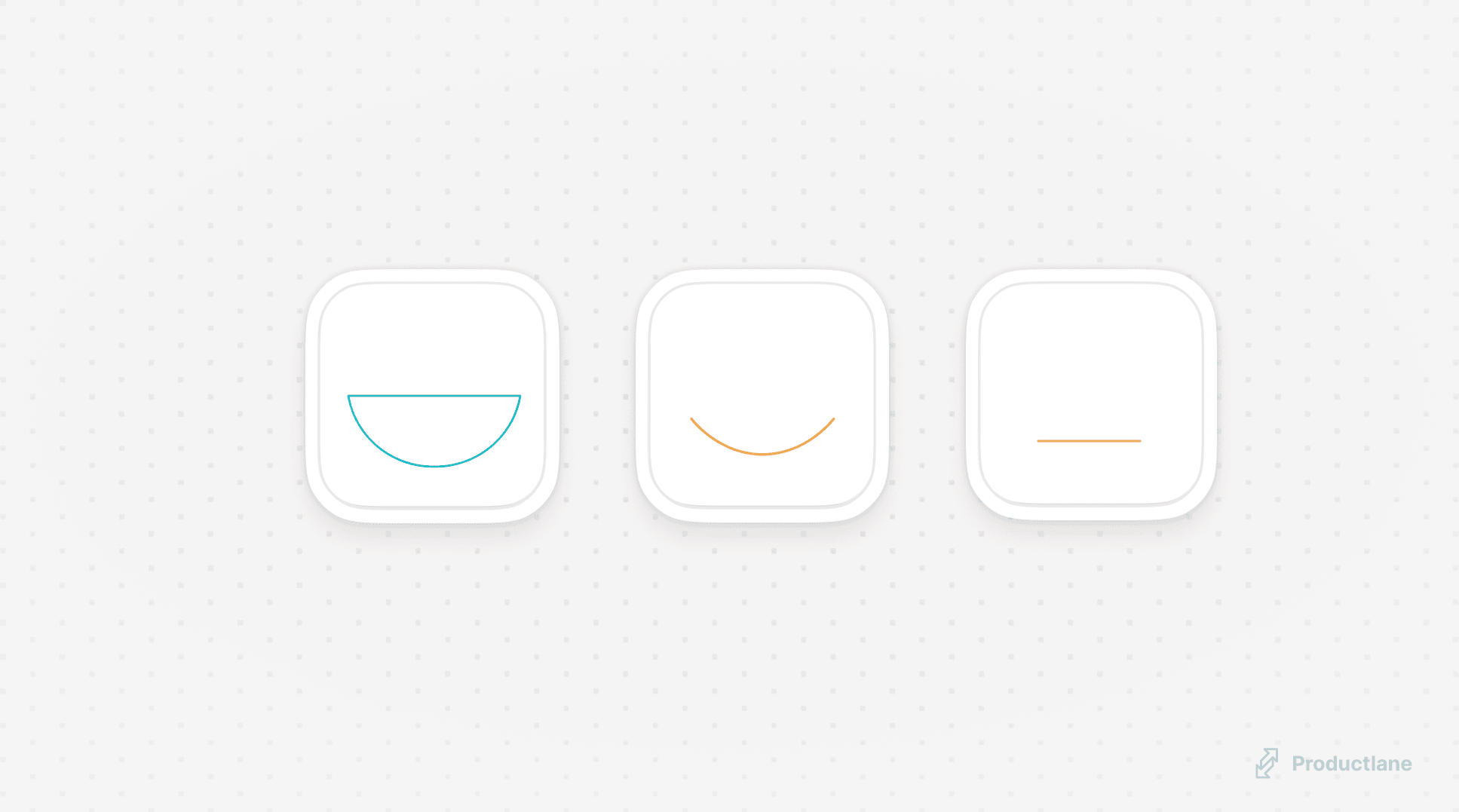How to best conduct user interviews
How to best conduct user interviews

Andrea Ramsbacher
Growth Manager
Oct 24, 2023
10m
Conducting user interviews is one of the most powerful tools for developing your product. Because it's simply the easiest way to understand what your product’s opportunities are, that is what your customers want or need but haven't got yet.
However, it’s also a tricky approach as we’ve also realized ourselves that it can get quickly overwhelming to understand users.
This article has everything you need to know about doing customer interviews, whether you're new to it or have done it many times. It has step-by-step tips for your interview process and the best questions to ask that will help your product team get the best insights from users.
Conducting User Interviews: An Overview
Let’s start from the basics. User interviews are a qualitative method used to collect data directly from users. These interviews can be conducted in various ways, including in person, over the phone, or via video conferencing. What is important to note is that not every conversation with a customer is a user interview. Usability tests, sales and support conversations usually do not count as a user interview because the intent is not to understand what the customer wants but more to help solve an issue or sell a feature.
When done right, user interviews can reveal great information about your user base, their needs, and experiences. You can then act on this information and build your product accordingly. These are usually the most important questions to consider when you want to tackle user interviews:
What is the purpose of my interview?
Who are my interview participants?
What should my interview process look like?
How should I take notes during interviews?
How often should I conduct user interviews?
How can I combine interviews with other research methods?
Let’s look at these steps in more detail.
The Purpose of User Interviews
Before diving into the interview process, it's essential to define your research goal. What do you want to learn from these interviews? Are you seeking to understand user personas, their journey maps, or specific usability issues? So, setting a clear research goal will help you create the right questions as well as define the direction of your interviews.
Of course, your research goal might shift a bit along the way, but starting with a clear purpose will ensure you ask the right questions, talk to the right people, and, ultimately, dig up the best insights from your interviews. It's like having the building plans before you construct a house – your research goal is the foundation of your interview adventure.
The Recruitment of Interview Participants
The success of your user interviews will also depend on whether you are talking to the right participants. Do you want to talk to users who represent your entire customer base, or do you want to talk to experts in your field? You will not ask them the same questions or have the same feedback expectations.
It will also very much depend on your product. Because different products have different types of users. If you're working on a subscription product, you'd want to talk to both those who use it a lot and those who don't. If your product is a B2B product, you'll have to talk to both the people who buy it and the people who use it. If you are a startup and don't have customers yet, talk to potential customers. The main idea is to talk to the people who use your product and understand their needs to make it better for them. It's therefore essential to recruit interviewees who match your user personas and can provide the insights you need, depending on your interview goal.
Side note. We know that some companies reward their users or customers who take time for interviews with gift cards or free trials. We believe that, as long as you explain what the purpose and benefits of the conversations are, you don’t necessarily need to give something material or financial in return. Just state you want to find solutions to their problems and what they want and do not ask them to spend endless hours.
The Interview Process
You should also be carefully designing your questions during interviews. Now, brainstorming for questions might be tough to start with, but it will ensure to conduct the interview process in the best possible way. Your questions should be open-ended because they will encourage interviewees to share their experiences, thoughts, and feelings freely. They should also be designed to avoid leading questions. This will more likely yield complete answers instead of closed-ended questions with limited or one-word answers.
When conducting a user interview, it's also important to make your user feel comfortable. At Productlane, we always try to start with a casual conversation to establish a good environment and then gradually move into the core interview questions. An additional essential point is to have different people conducting interviews. It should not always be a product manager but also a designer or a software engineer so that you can collect further insights from your users.
Taking Notes
As simple as it might sound, taking thorough notes during user interviews to document the conversation is of paramount importance and often a forgotten step. These notes will be essential when analyzing the collected data after the interview. Remember, note-taking isn't solely about recording words; it's about capturing the entire conversation, including the non-verbal cues, such as facial expressions and tone of voice. And that can be a multitasking challenge.
Luckily, technologies nowadays can help in recording and transcribing user interviews effectively. Tools like Productlane or Grain are designed to streamline the note-taking process during conversations with customers, where you can review the recording and transcribed words later. These tools can also help you identify the opportunities in what the customer said and share it with the rest of the team so that the user interview is actually a helpful step in the decision-making of your product.
The Frequency of User Interviews
But how often should you talk to users? This is also a very question and the simple answer: as much as possible. Talking to customers regularly is crucial because customer needs change, so the more you talk to them, the more up-to-date your understanding will be for making good product decisions. We advise talking to customers at least once a week, but remember, even if you start with just one customer a month, you can gradually increase the frequency later. And consistency is key - talking to one customer weekly is better than having an irregular schedule.
What’s more, we believe that, especially if you are new to user interviews, it's good to talk to different kinds of people to understand their experiences better. This helps us see the differences between customers. But as you continue talking to the same customers over time, you'll learn more about their experiences and how their needs change. Moreover, it is quite easy to find customers to talk to each week if you automate the process. You should set up your interviews in advance and recruit them, for instance, while they use your product or get help from your customer-facing teams.
Combining Interviews with Usability Test
Finally, you should note that user interviews can be combined with other research methods, such as usability tests, to get a better understanding of your users.
A usability test is a method of evaluating a product or system by observing real users as they interact with it. Merging these two methods makes you gain a better view of your users’ experience because you not only identify their pain points but also see how they emotionally respond to these issues. For instance, you might see how they react the first time they use a new feature you’ve just launched while you have a user interview. This way, you see their live reactions and can assess whether you have brought them a solution to their problems.
Best Practices for Effective User Interview Questions
Let's face it: although you now have a better idea of how a user interview should look like, it can still be overwhelming to start such interviews. We know for a fact that interview questions are a challenging step, especially when you are just building a new product.
So, here's a set of question categories to ask your users in an interview that worked well for us and that ensures you understand the problems, opportunities, and solutions of your product:
Identifying Pain Points: “What aspects of this daily process pose the greatest challenges for you?” You always have to make sure that the issues your product is solving really matter to your users and that they are actively looking for a solution (like your product, hopefully). And even if you have already built something, continue asking this question because the problems your users are encountering might change over time.
Unearthing Real-Life Scenarios: “Can you recall the most recent time when you encountered this issue?” You should try to focus on real examples instead of just imagining situations so you can understand exactly how your users will use your product in their daily lives and can create something that addresses their actual needs. Specific stories also give you more accurate insights because general questions can be influenced by biases and assumptions.
Understanding the 'Why': “Why do you find these challenges difficult?” This question will help you know how to promote your product and why it's useful. Remember, customers usually care more about why they need your product than what it actually does
Exploring User Initiatives: “Have you taken any steps to address this issue?” If people haven't looked at other options besides yours, it could mean that the problem isn't urgent. Asking this question also helps you understand what other choices are available and what competitors are doing.
Identifying Pain Points with Existing Solutions: “What aspects of the solutions (yours but also others’) you've tried do you find unsatisfactory?” This forms the base for new product features that can fix specific problems with existing solutions. It will help you avoid asking for features that might not be useful and instead concentrate on real problems your product can solve.
Again, the most important thing to keep in mind is always to ask open-ended questions that will give you more valuable user insights. Of course, besides good questions, there are other best practices you should implement to conduct the best user interviews possible, such as scheduling your interviews well in advance, following up with your users all the time, and seeking every possible opportunity for customer feedback.
Conclusion
Remember, conducting user interviews is not just a task for your product team; it is an essential part of the process to create the best user experiences and solve real customer problems. That’s why you should really focus on having good-quality user interviews. And if you feel overwhelmed at first, follow these above-mentioned tips: define your research goal clearly to ask the right questions and talk to the right people, design open-ended questions on problems, opportunities, and solutions, and take detailed notes. With that in mind, you’ll seek valuable insights and keep the conversation with your users alive. And you'll be one step closer to delivering a great product that truly resonates with your audience.
You might also like


